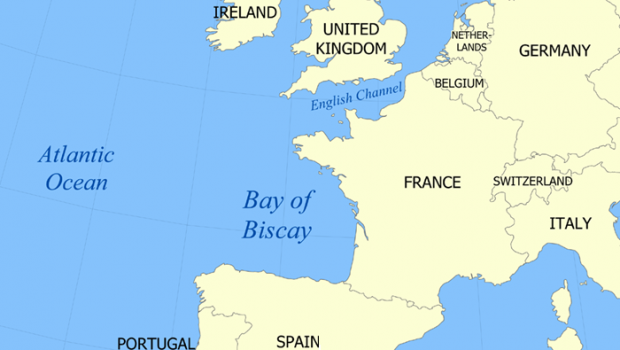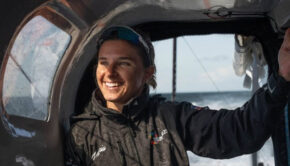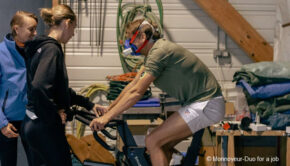Where storms and boats meet
Published on February 22nd, 2021
The notoriety of Cape Horn is well established in sailing history. Once a required shipping route, its southern latitude remains frigid with fierce winds and correspondingly large waves. Tragedy and triumph are well recorded at this turn of round the world races.
But the Bay of Biscay is no pushover either. This gulf of the northeast Atlantic Ocean is the gateway for French offshore yachting, and it is where competitors in the Vendée Globe must transit twice for the start and finish in Les Sables d’Olonne.
The past three weeks the Bay of Biscay have not been easy, with the Azores high pressure displaced from its normal position, and the train of Atlantic low pressures have rolled in one after the other unchecked into Biscay.
“In winter, these lows that form on the east coast of the USA or off Canada can be deep and can follow one another regularly with only 36 to 48 hours between two frontal passages,” explains Christian Dumard, the Vendée Globe weather consultant. “And the key thing is this rapid succession of lows generates a residual swell in the North Atlantic. The wave heights now can be similar to those encountered in the Deep South.
“At the edge of the continental shelf, the sea depths rise from several thousand meters to a few hundred meters. This rise in the sea bed creates dangerous seas. We have the same thing in the South of New Zealand and at the approach to Cape Horn.
“The problem is that when the boats get into the Bay of Biscay, there is no way out. It is like a funnel and the end of the funnel is the finish off Les Sables d’Olonne.”
For competitors in the 2020-21 Vendée Globe it has, perhaps more than in recent editions, been about timing and avoiding the worst of the stormy winds and seas. Such as was the case with Armel Tripon, who stayed on hold for almost 48 hours off the coast of Portugal to avoid sailing into the Bay of Biscay with 50 knots of wind and eight meter high waves.
“You have to factor in the fatigue accumulated by the skippers and by the boats, the very busy hotspots of maritime traffic and the fishermen,” assessed Dumard. “A return to the Atlantic coast in winter is not always as much of a pleasure at the end of the race.”
Indeed many solo racers have seen their dreams shattered or at least severely compromised just a few days from the finish, with the most damaging this time being Boris Herrmann’s collision with a Spanish fishing boat at 90 miles from the finish line.
In 2016-17, Conrad Colman dismasted between the Azores and Portugal, 750 miles from the finish (he finished under jury rig 12 days later). In 2013, Javier Sanso capsized in the southern Azores after losing his keel. The same year, Jean Pierre Dick anchored for three days in the north of Spain to avoid a big gale after sailing his boat without a keel from Cape Verde (he finished fourth).
In 2008, it was another keel failure just before the Azores that prevented Roland Jourdain from finishing. Four years earlier, the same concern for Brit Mike Golding, whose keel broke off 90 miles from the finish (he nevertheless finished 3rd).
Catherine Chabaud dismasted at 250 miles from Vigo (Spain) during the 2000-2001 edition and even in the second edition Philippe Poupon lost his mast a few days from the finish line and lost second to Jean Luc Van Den Heede but became the first skipper to finish under jury rig.
While Cape Horn may get the attention with celebration and cigars, transiting the Bay of Biscay earns more relief than reward.









 We’ll keep your information safe.
We’ll keep your information safe.